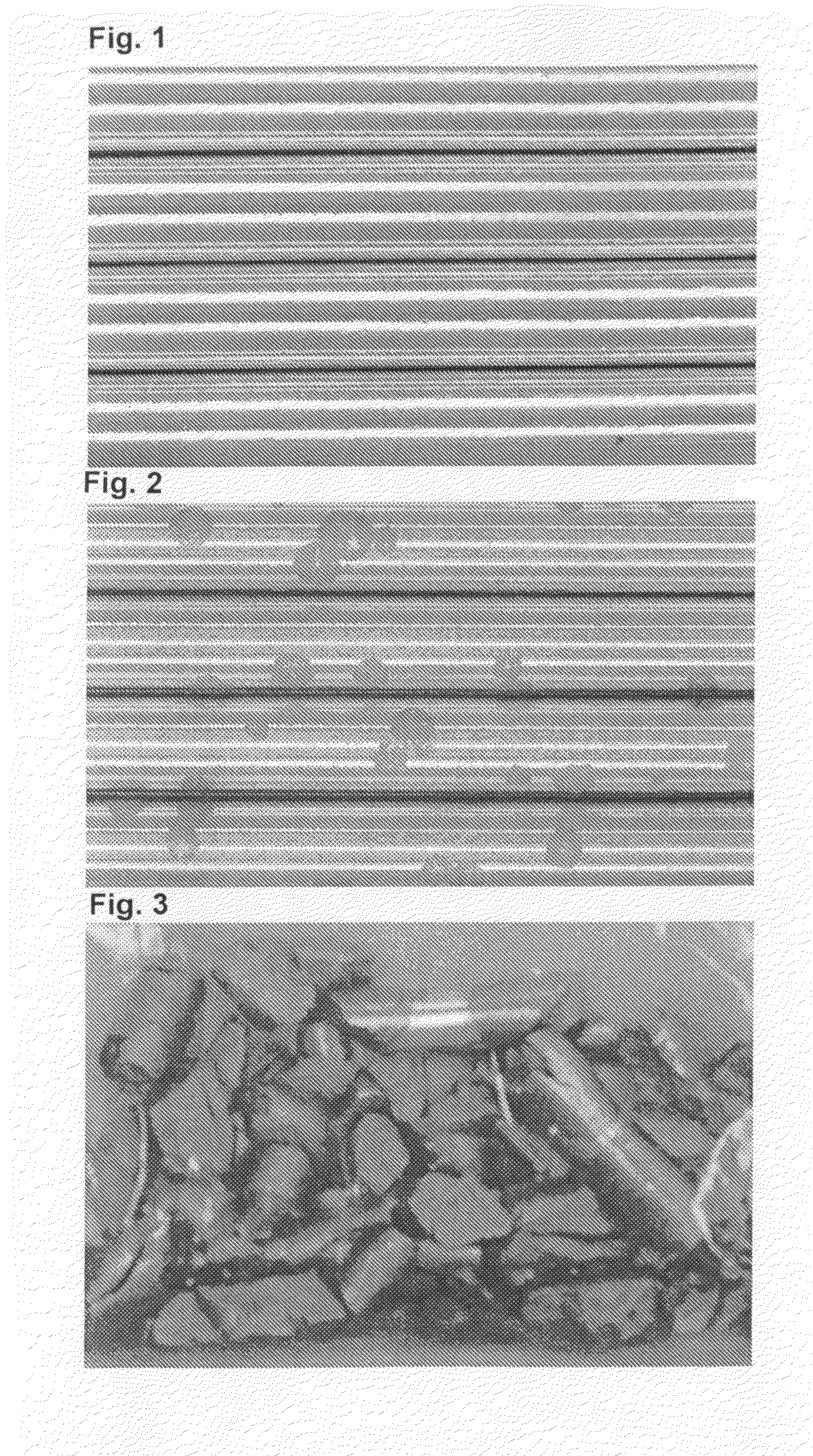Lead-free solder
a lead-free solder and cu-based technology, applied in the direction of welding/cutting media/materials, manufacturing tools, solvents, etc., can solve the problems of easy peeling of soldered joints formed therefrom in extremely cold regions, and high melting temperature of lead-free solder, etc., to achieve excellent impact resistance, improve wettability, and cheaply produce soldered joints
- Summary
- Abstract
- Description
- Claims
- Application Information
AI Technical Summary
Benefits of technology
Problems solved by technology
Method used
Image
Examples
examples
[0043]Lead-free solders having the compositions shown in Table 1 were used to carry out test on tin pest, impact resistance, and spreadability in the following manner. Each of the raw materials used to prepare the solder alloys had a Pb content of at most 300 ppm. In the table, the alloys of Test Nos. 1-3 had a composition according to the present invention. The test results are also shown in Table 1.
[0044]
TABLE 1MeltingTestAlloy composition (mass %)TinImpacttemperatureNo.SnCuNiBiOtherpestresistanceSpreadability(° C.)1rem0.50.020.1◯◯◯228-2292rem0.50.020.5◯◯◯224-2313rem0.80.040.9◯◯◯225-2314rem0.7X◯X227-2295rem0.5Ag: 3◯X◯217-2196remSb: 5◯XX240-2437remZn: 9ΔX◯198-2148rem3Zn: 8.5◯XX190-1979rem0.60.05Ge: 0.01X◯◯228-25010rem0.50.021.5◯X◯226-230
[0045]Tin Pest Test:
[0046]A lead-free solder of each composition was cast into an open casting mold (a boat-shaped mold) having a long side of 30 mm, a short side of 20 mm, and a length of 200 mm to obtain a rod-shaped casting. The outer periphery o...
PUM
| Property | Measurement | Unit |
|---|---|---|
| temperatures | aaaaa | aaaaa |
| temperature | aaaaa | aaaaa |
| melting point | aaaaa | aaaaa |
Abstract
Description
Claims
Application Information
 Login to View More
Login to View More - R&D
- Intellectual Property
- Life Sciences
- Materials
- Tech Scout
- Unparalleled Data Quality
- Higher Quality Content
- 60% Fewer Hallucinations
Browse by: Latest US Patents, China's latest patents, Technical Efficacy Thesaurus, Application Domain, Technology Topic, Popular Technical Reports.
© 2025 PatSnap. All rights reserved.Legal|Privacy policy|Modern Slavery Act Transparency Statement|Sitemap|About US| Contact US: help@patsnap.com


